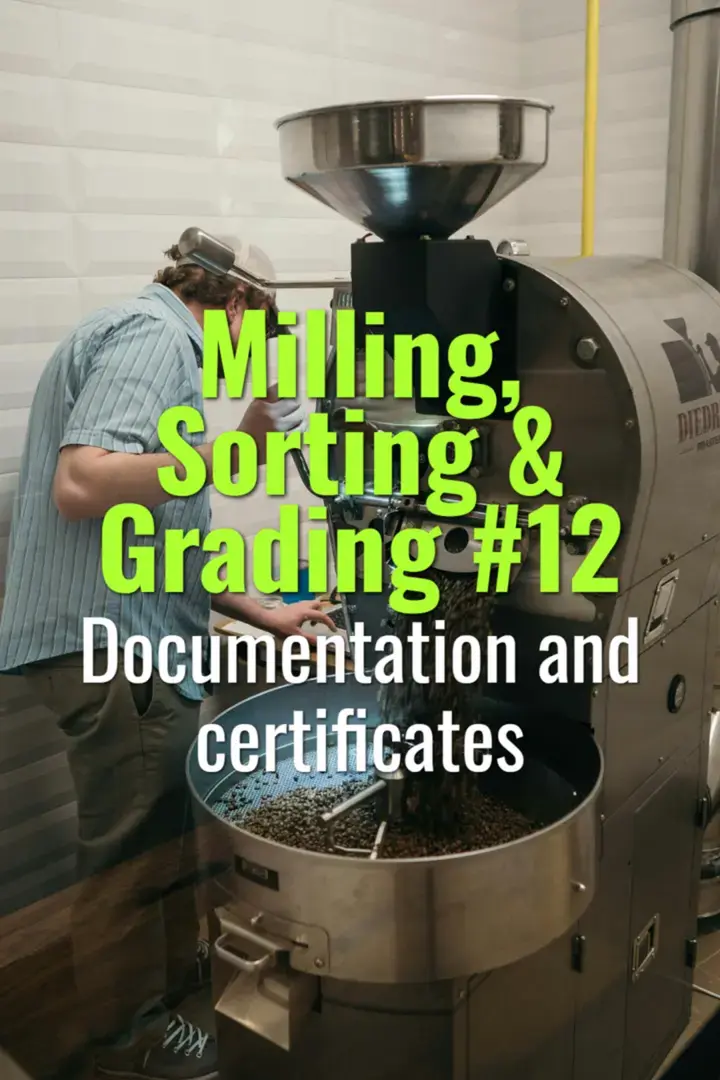Documentation and certificates
This topic explains the role of documentation and certificates in coffee milling and export, the types required, and how they ensure compliance, traceability, and buyer confidence.
- Coffee Basics Nerds
- 2 min read
Article 12 of 12 in Milling, Sorting & Grading/

Why Documentation Matters
- Coffee passes through multiple stages before export.
- Proper documentation ensures traceability, legal compliance, and quality verification.
- Certificates provide buyers with proof of origin, safety, and sustainability.
Key Documentation Types
1. Traceability & Lot Records
- Lot codes linking farm → mill → exporter.
- Processing records: harvest date, method, drying notes.
- Moisture and quality control logs.
2. Quality Certificates
- Issued by cupping labs or certification agencies.
- Includes SCA scores, defect counts, moisture %, and water activity.
- Demonstrates compliance with specialty standards.
3. Phytosanitary Certificate
- Required by importing countries.
- Confirms coffee is free of pests and diseases.
- Issued by national agricultural authorities.
4. Certificates of Origin
- Proves country or region of production.
- Often needed for customs clearance and trade agreements.
5. Sustainability & Certification Labels
- Organic, Fairtrade, Rainforest Alliance, UTZ, etc.
- Require documentation of farm practices and audits.
6. Export Documentation
- Bills of lading, invoices, packing lists.
- Insurance certificates for shipments.
Benefits of Certificates
- Build buyer trust by proving quality and compliance.
- Enable access to specialty markets with strict standards.
- Provide legal protection in disputes.
- Support premium pricing through sustainability claims.
Challenges
- Complex paperwork for smallholder cooperatives.
- Certification costs can be high.
- Requires training and organization to maintain records.
Best Practices
- Keep both digital and physical copies of all documents.
- Standardize record-keeping formats.
- Align certificates with lot codes for full transparency.
- Work with exporters or cooperatives experienced in certification.
Lasting Importance
Documentation and certificates are the backbone of global coffee trade. They ensure that coffee moves across borders legally, arrives with verified quality, and reaches buyers with confidence in its origin, safety, and sustainability claims.
You might also like:
- Tags:
- Lasting Importance
- Best Practices
- Quality Control
- Matters Coffee
- Specialty Markets
- Water Activity
- Rainforest Alliance
- Global Coffee
- Lot Codes
- Coffee Trade
- Ensure Coffee
- Organic Fairtrade
- Pests Diseases
- Defect Counts
- Record Keeping
- Sustainability Claims
- Fairtrade Rainforest
- Moisture Water
- Buyer Trust
- Premium Pricing
- Requires Training
- Harvest Date